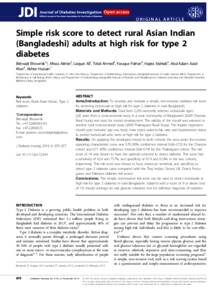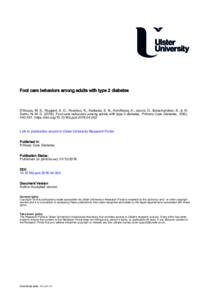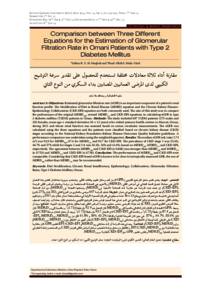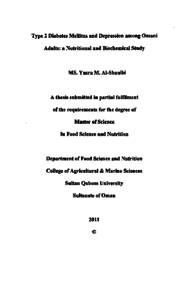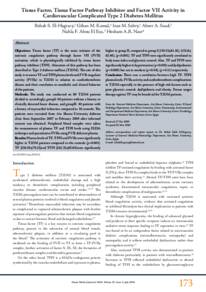وثيقة
Simple risk score to detect rural Asian Indian (Bangladeshi) adults at high risk for type 2 diabetes.
المعرف
DOI: 10.1111/jdi.12344
المساهمون
Akhter, Afroza., مؤلف
Ali, Liaquat., مؤلف
Ahmed, Tofail., مؤلف
Pathan, Faruque., مؤلف
Mahtab, Hajera., مؤلف
Khan, Abul Kalam Azad., مؤلف
Hussain, Akhtar., مؤلف
الناشر
University of Oslo.
ميلادي
2015-11
اللغة
الأنجليزية
الملخص الإنجليزي
Aims/Introduction: To develop and evaluate a simple, non-invasive, diabetes risk score for detecting individuals at high risk for type 2 diabetes in rural Bangladesh. Materials and Methods: Data from 2,293 randomly selected individuals aged ≥20 years from a cross-sectional study in a rural community of Bangladesh (2009 Chandra Rural Study) was used for model development. The validity of the model was assessed in another rural cross-sectional study (2009 Thakurgaon Rural Study). The logistic regression model used included age, sex, body mass index, waist-to-hip ratio and hypertension status to predict individuals who were at high risk for type 2 diabetes. Results: On applying the developed model to both cohorts, the area under the receiver operating characteristic curve was 0.70 (95% confidence interval 0.68-0.72) for the Chandra cohort and 0.71 (95% confidence interval 0.68-0.74) for the Thakurgaon cohort. The risk score of >9 was shown to have the optimal cut-point to detect diabetes. This score had a sensitivity of 62.4 and 75.7%, and specificity of 67.4 and 61.6% in the two cohorts, respectively. This risk score was shown to have improved sensitivity and specificity to detect type 2 diabetes cases compared with the Thai, Indian, Omani, UK, Dutch, Portuguese and Pakistani diabetes risk scores. Conclusions: This simple, non-invasive risk score can be used to detect individuals at high risk for type 2 diabetes in rural Bangladesh. Subjects with a score of 9 or above (out of 15) should undergo an oral glucose tolerance test for definitive diagnosis of diabetes.
المجموعة
ISSN
2040-1116
URL المصدر
قالب العنصر
مقالات الدوريات

